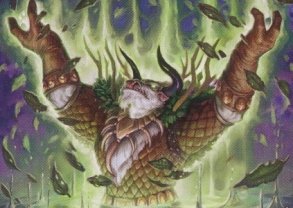


When you transform, you assume the beast's hit points and Hit Dice.You Automatically revert if you fall unconscious, drop to 0 hit points, or die.SO, for the third time here, let us look at the relevant Wild Shape text: Wild Shape I will make a case that instant death is checked after a reversion to normal form. Ace makes a case for both possibilities equally, and anax makes a case for instant death checking before reverting to normal form.

So if you rule that instant-death is very fatal for shapeshifters, hope your players never realize that they can just start turning the bad guys into box turtles and stepping on them.ĪceCalhoon and anaximander have both provided some well thought out and thoroughly explained answers here already. The 4th-level spell Polymorph uses the same mechanics as the Druid's wildshape ability. Because it's the only one that supports my playstyle. Therefore, I must rule for interpretation two. Well, you aren't going to have many druids turning into things other than tigers or bears. But if turning into a sparrow to serenade the innkeeper's daughter means you instantly die when you fail the perception check to spot her cat Boots. There is ultimately no way to resolve the atomicity of the instant death process, short of "Word of God" from a developer.įor my table, I like Druids to use their abilities as something other than a combat cooldown. He reaches zero, reverts to druid, instant death is checked against his druid hit points, and the special-case against unconsciousness kicks in to keep him on his feet. If you subscribe to the second, then the spider-druid can take a normal amount of damage before dying. There is an explicit special case to prevent unconsciousness, but there isn't one to prevent death. They take the damage, it is instantly fatal, and they revert form. If you subscribe to the first interpretation, then a spider-druid dies when they take 2 points of damage. The example is also done in very distinct steps: The cleric takes damage, is reduced to 0 hit points, then the remaining damage is checked, then the cleric dies. Nothing "remains" unless it is "remaining after" something else. "Remains" implies a two phase process: apply the damage, and then check what's left. Any sequencing in the description is purely to help understand the process. You apply the damage, and then under certain circumstances the target dies. Instant death is fundamentally, a single, atomic, operation. There are two ways to interpret the instant death rules: Because the remaining damage equals her hit point maximum, the cleric dies. If she takes 18 damage from an attack, she is reduced to 0 hit points, but 12 damage remains. When damage reduces you to 0 hit points, and there is damage remaining, you die if the remaining damage equals or exceeds your hit point maximum. As long as the excess damage doesn't reduce your normal form to 0 hit points, you aren't knocked unconscious. For example, if you take 10 damage in animal form and have only 1 hit point left, you revert and take 9 damage. If you revert as a result of dropping to 0 hit points, any excess damage carries over to your normal form. You automatically revert if you fall unconscious, drop to 0 hit points, or die. Whether they improve a Druid’s spellcasting ability, increase their physical prowess, offer out-of-combat utility, or bring something new to a Druid that it wouldn’t have otherwise, they are an excellent means of fleshing out a character and giving them some extra value.The relevant rules are Wild Shape on pages 66 - 67: A Feat can take on a variety of different forms, and there's a variety of choices for Druid Feats, including homebrews, depending on the module or the whim of the Dungeon Master. Feats are part of the character build that allows the class to gain access to even more party roles. They have access to a wide range of utility through the ability to shapeshift via Wild Shape in addition to being able to cast spells. Updated on March 19, 2023, by Kristy Ambrose: Druids are a combination class in every game in which they appear, including D&D. However, some feats are much more well-suited to Druids than others, so today, we're going to examine the best Feats for those playing a Druid in Dungeons & Dragons. Feats are special abilities that can be gained by a player rather than increasing their ability scores on designated level-ups. While players can customize their druids through their choice of subclass, race, and spells, they are also able to gain additional utility through the use of Feats.

RELATED: D&D: Things You Didn’t Know About Orcs With access to a sizable spell list and the iconic Wild Shape ability that allows them to turn into animals, Druids are among the most versatile classes in the game. There are several distinct classes in Dungeons & Dragons, each with its own unique strengths.


 0 kommentar(er)
0 kommentar(er)
